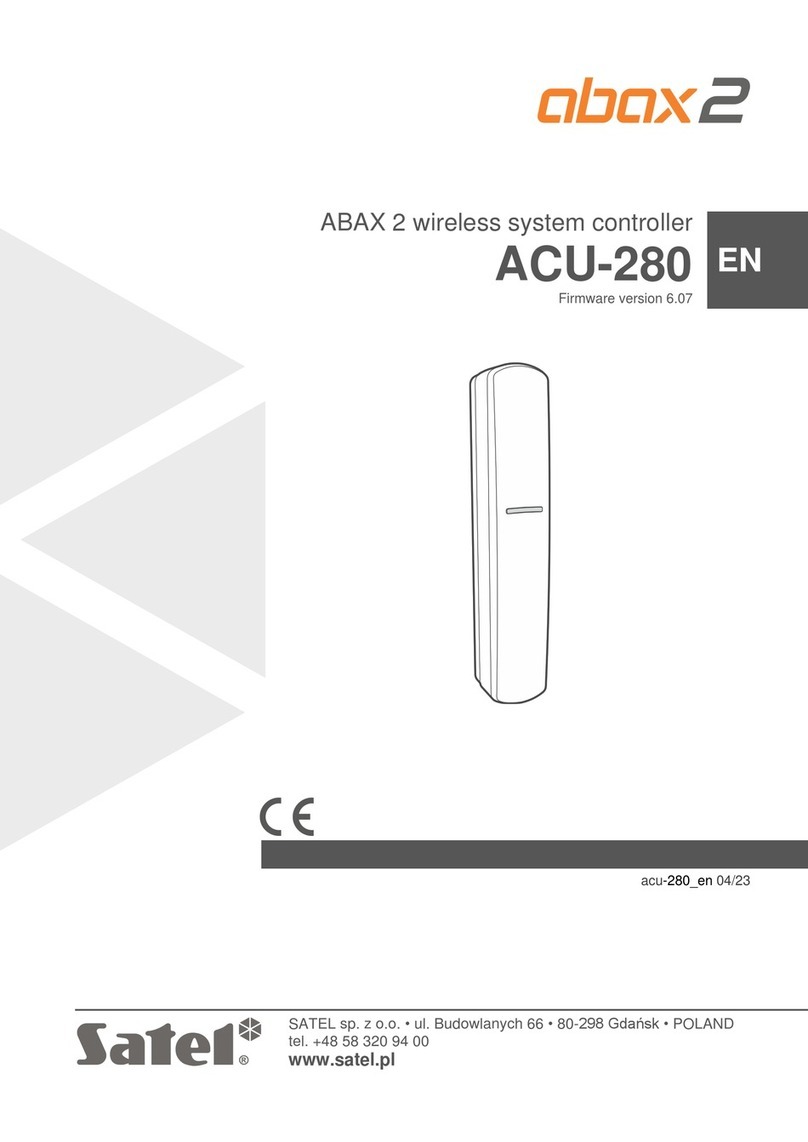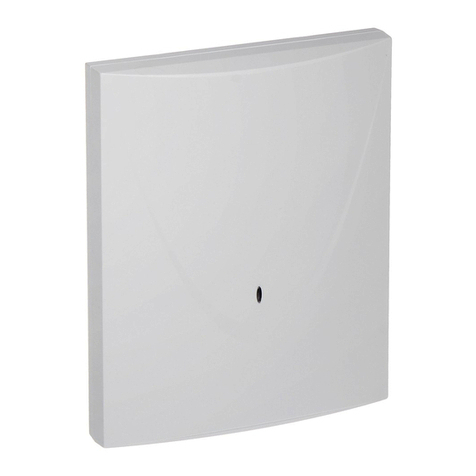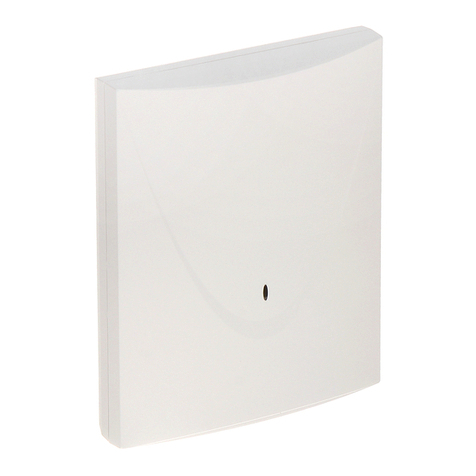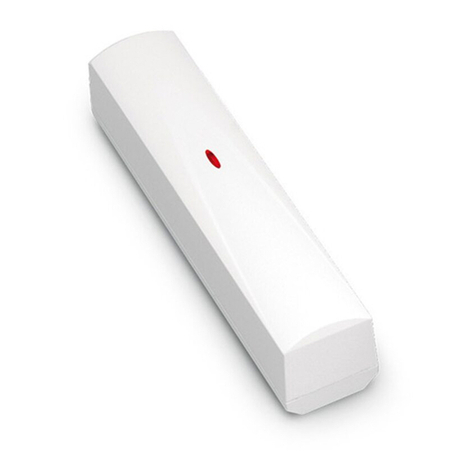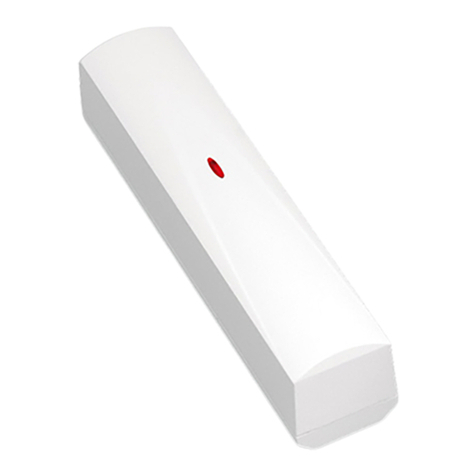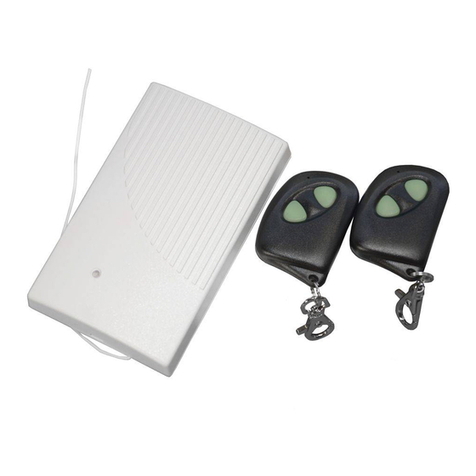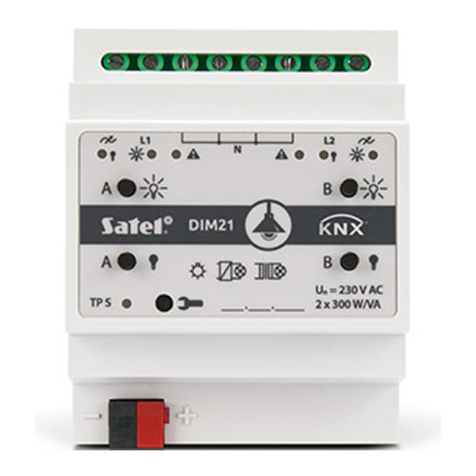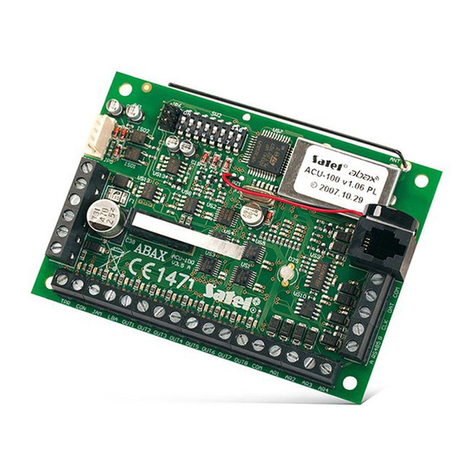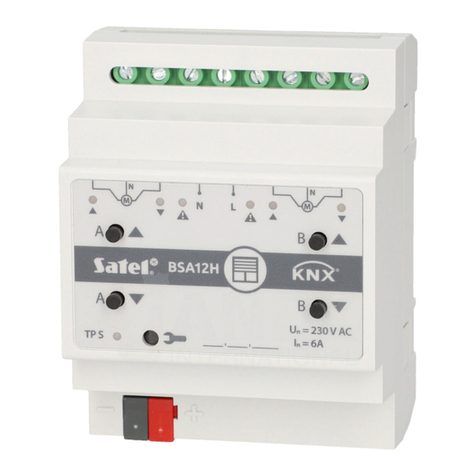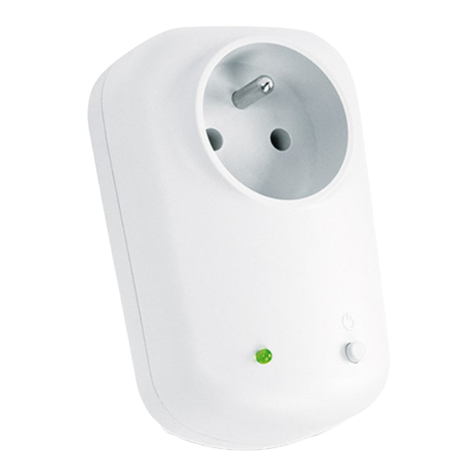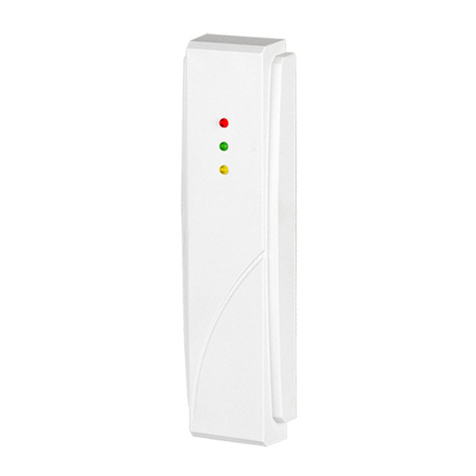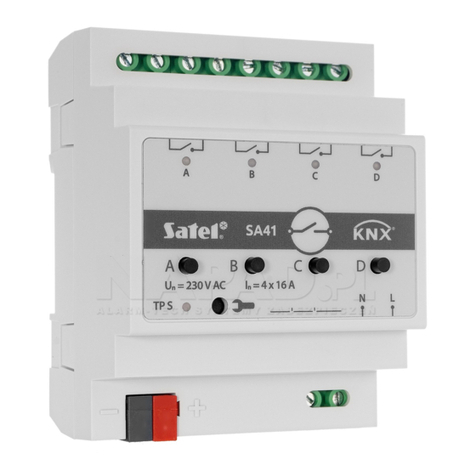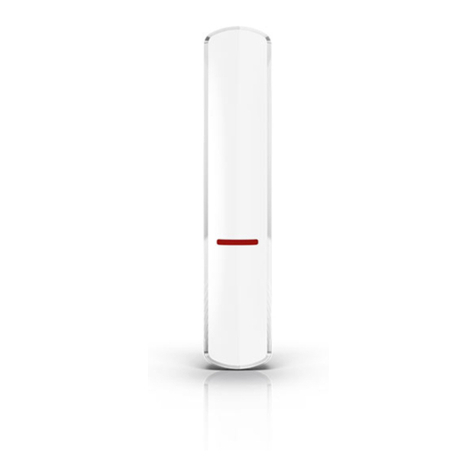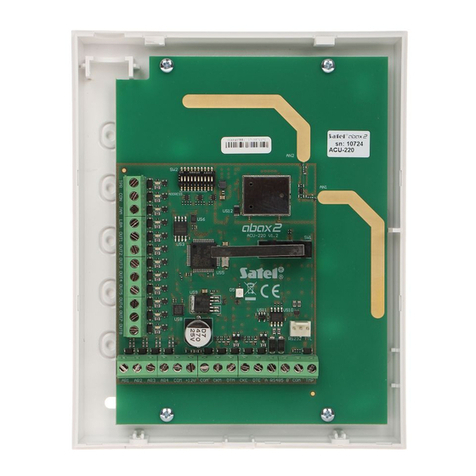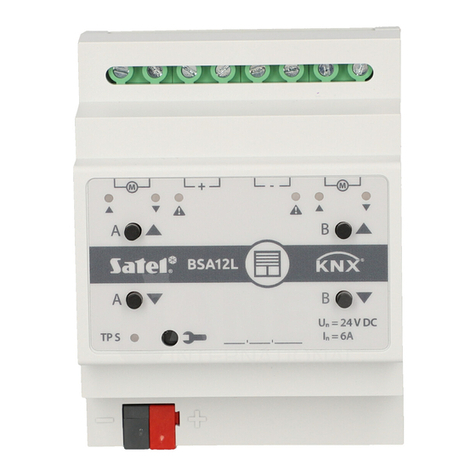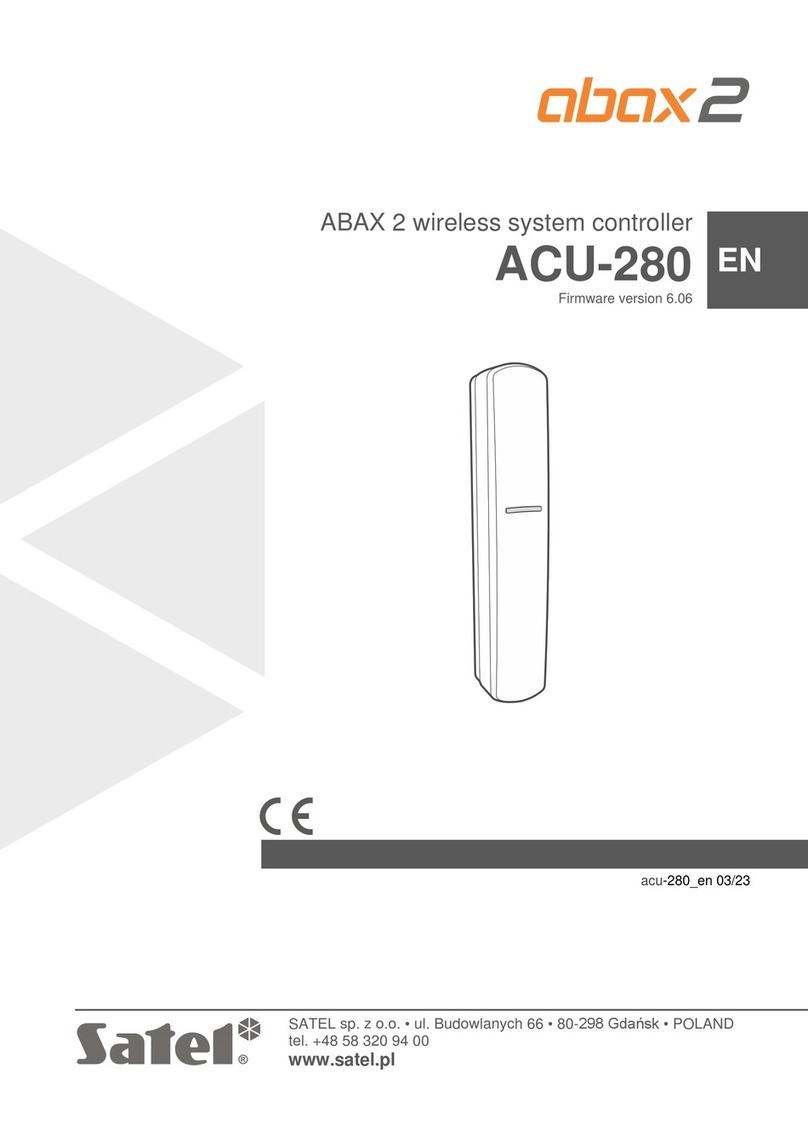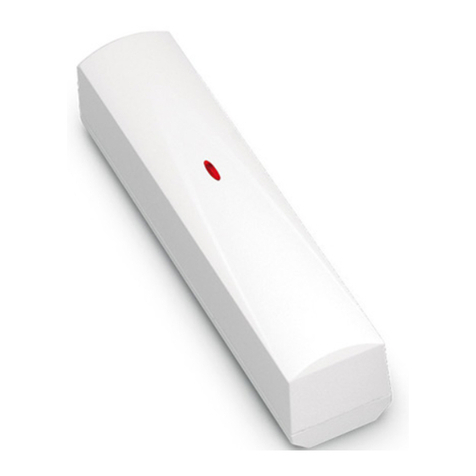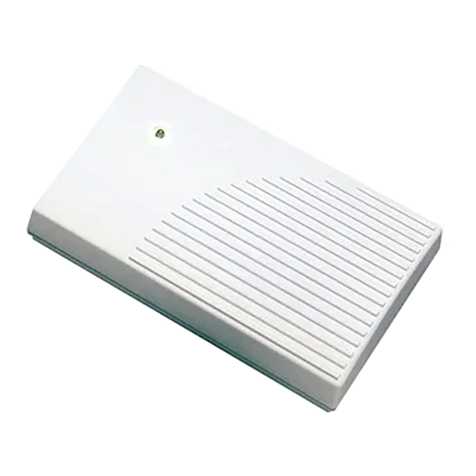
SATEL ASW-210 3
Operating modes
You can select the operating mode when configuring the ASW-210 controller settings (refer
to the ABAX 2 controller / INTEGRA 128-WRL control panel manual). For each position
occupied by the controller on the list of wireless devices, you can select a different operating
mode:
mode 0 – the relay can only be controlled via the controller / control panel. The state of the
wired input is of no consequence for the relay, but information about the input
state is sent to the controller / control panel.
mode 1 – the relay can be controlled via the controller / control panel as well as by using the
monostable switch connected to the wired input. Information about the input state
is sent to the controller / control panel.
mode 2 – the relay can be controlled via the controller / control panel as well as by using the
bistable switch connected to the wired input. Information about the input state is
sent to the controller / control panel.
4. Installation
Disconnect power before making any electrical connections.
Connect the controller to a single-phase network according to the applicable
standards.
Do not remove the controller from the enclosure. Installing the controller
without enclosure or with a damaged enclosure poses a risk of electric shock
and may damage the module.
The wired inputs of the controller are not galvanically isolated.
It is not recommended to use the controller to switch the capacitive loads (e.g.
LED lighting power supply units, LED lamps) more frequently than every 10
seconds.
Do not connect more than one LED lighting power supply to the relay output.
The ASW-210 controller is designed for mounting inside an electrical junction box (60 mm
deep). It should be installed indoors, in spaces with normal air humidity. When choosing the
installation location, remember that thick masonry walls, metal partitions etc. reduce the radio
signal range.
The electrical circuit to which the controller is to be connected must be protected by
a suitable safety device. Let the owner / user of the ABAX 2 / ABAX system know how to
disconnect the device from the mains supply (e.g. indicate the fuse or circuit breaker
protecting the controller supply circuit).
To connect the wires, use screw terminal blocks, splicing connectors, etc.
1. Power off the circuit to which the controller is to be connected.
2. Open the electrical junction box in which the controller is to be installed.
3. Connect the controller to the 230 V AC supply circuit (brown wire [L] to phase wire; blue
wire [N] to neutral wire – Fig. 2).
4. Place the controller in the junction box. Make sure the electric wires are behind the
controller enclosure.
5. Power on the circuit to which the controller is connected.
